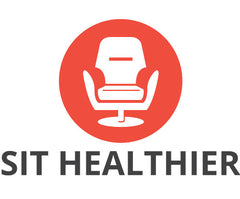As a dentist, you spend long hours sitting in a chair while treating patients. This can lead to discomfort and even pain in your back, neck, and shoulders. Saddle chairs offer a more ergonomic and comfortable seating option for dentists, with benefits such as improved posture and reduced strain on the body. Learn more about why saddle chairs may be the better choice for your dental practice.
The Importance of Ergonomics in Dentistry.
As a dentist, you know the importance of maintaining good posture and reducing strain on your body while treating patients. Poor ergonomics can lead to chronic pain and even career-ending injuries. Saddle chairs offer a more ergonomic seating option for dentists, with features such as a tilted seat and adjustable height to promote proper posture and reduce strain on the back, neck, and shoulders. Investing in ergonomic seating can not only improve your comfort and well-being, but also enhance the quality of care you provide to your patients.
What are Saddle Chairs and How Do They Work?
Saddle chairs are a type of ergonomic seating that is designed to promote proper posture and reduce strain on the body. They feature a tilted seat that positions the pelvis in a more natural, forward-leaning position, which helps to align the spine and reduce pressure on the lower back. The adjustable height of the chair allows the dentist to position themselves at the optimal height for each patient, reducing strain on the neck and shoulders. Saddle chairs also typically have a smaller seat than traditional chairs, which allows for greater freedom of movement and better access to the patient's mouth.
Benefits of Saddle Chairs for Dentists.
Saddle chairs offer numerous benefits for dentists, including improved posture, reduced strain on the lower back, and better access to the patient's mouth. The tilted seat promotes a more natural, forward-leaning position that aligns the spine and reduces pressure on the lower back. The adjustable height of the chair allows the dentist to position themselves at the optimal height for each patient, reducing strain on the neck and shoulders. Additionally, the smaller seat allows for greater freedom of movement and better access to the patient's mouth, making it easier to perform dental procedures with precision and accuracy.
Drawbacks of Traditional Chairs in Dentistry.
Traditional chairs in dentistry can lead to poor posture, back pain, and discomfort for dentists. The flat seat and backrest do not provide adequate support for the lower back, leading to strain and discomfort during long procedures. Additionally, the fixed height of the chair can make it difficult for dentists to position themselves at the optimal height for each patient, leading to strain on the neck and shoulders. The larger seat can also restrict movement and make it more difficult to access the patient's mouth, leading to less precise dental procedures.
Making the Switch to Saddle Chairs: Tips and Considerations.
If you're considering making the switch to saddle chairs in your dental practice, there are a few things to keep in mind. First, it's important to choose a high-quality saddle chair that is adjustable and provides adequate support for your lower back. Look for chairs with a tilting seat and adjustable height to ensure that you can position yourself comfortably for each patient. Additionally, it may take some time to adjust to the new seating position, so be patient and give yourself time to get used to the new chair. Finally, consider investing in a saddle stool with wheels to make it easier to move around the office and access different areas of the patient's mouth.


Leave a comment